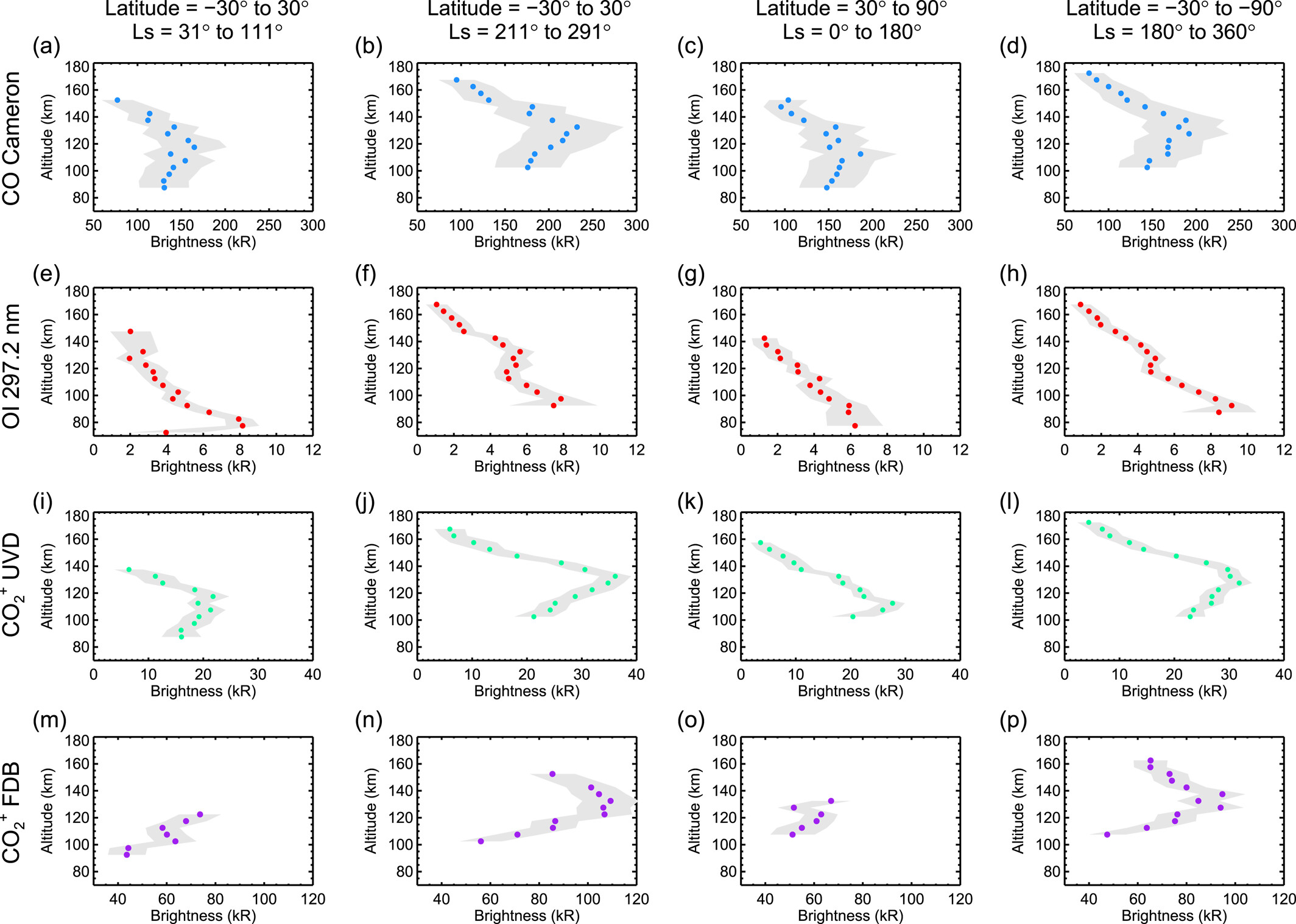(2023) JGR https://doi.org/10.1029/2023JE007762
L. Soret, J.-C. Gérard, B. Hubert, A. C. Vandaele, I. R. Thomas, B. Ristic, Y. Willame, N. Schneider, S. Jain, S. Gupta, J. P. Mason, M. R. Patel
The Trace Gas Orbiter has been orbiting Mars since 2016 with the Nadir and Occultation for MArs Discovery (NOMAD) UltraViolet and Visible Spectrometer (UVIS) instrument on board. Focusing on limb observations recorded in the ultraviolet (UV) part of the NOMAD/UVIS spectra, we describe here the CO Cameron bands, CO2+ UV doublet and Fox-Duffendach-Barker (FDB) bands and [OI] UV emissions. Averaged limb profiles are presented, showing that the strongest brightness and the highest peak altitudes are reached near perihelion. Ratios between the UV emissions are also estimated and compared with previous observations from Mariner and Mars Express. NOMAD/UVIS is the first instrument able to simultaneously acquire data both in the UV and the visible in the Mars atmosphere so that the oxygen green line at 557.7 nm and its UV counterpart at 297.2 nm, both originating from the same O(1S) upper state level, may be directly compared. A mean ratio of 15.8 is derived, in close agreement with ab initio calculations. The spectral composition of the CO2+ FDB system that has not been observed entirely since the Mariner missions in the 1970s is analyzed. According to the spectral composition of the FDB bands, we show that this emission is produced at ∼70% by photoionization of CO2 (which populates the shorter wavelengths of the spectrum) and ∼30% by resonance scattering of solar radiation (which populates longer wavelengths). No evidence of a change with altitude in the CO2+ FDB spectral composition is observed in the NOMAD/UVIS spectra.

Limb profiles of ultraviolet dayglow emissions (Cameron bands in blue, OI 297.2 nm in red, ultraviolet doublet in green and Fox-Duffendach-Barker in purple, organized by rows, from top to bottom) averaged in the equatorial region near aphelion (first column) and near perihelion (second column), in the northern summer hemisphere (third column) and during the southern summer (last column).

